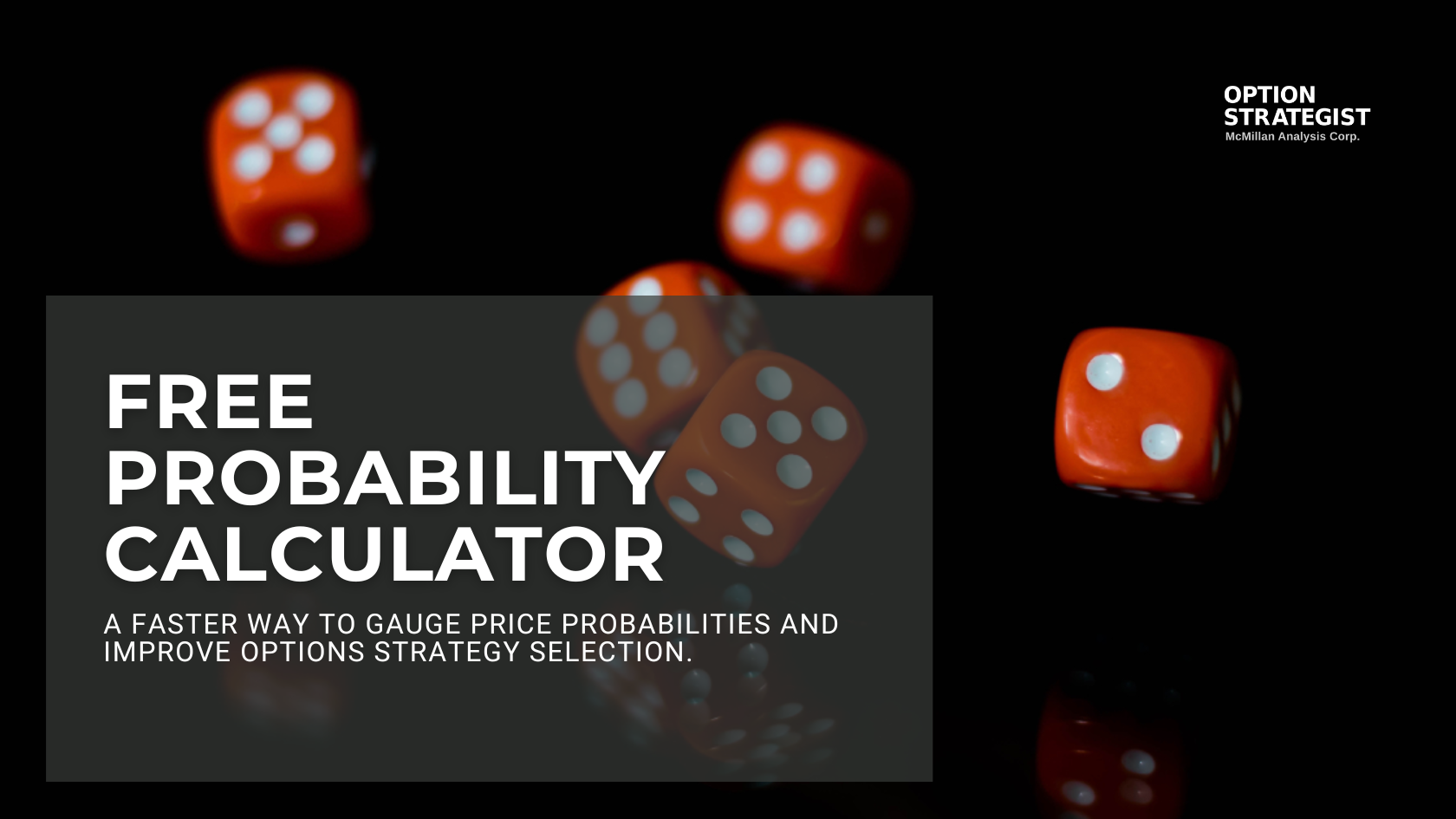
Probability Calculator
Calculate stock market probabilities with this easy-to-use tool. For deeper analysis using Monte Carlo simulation, check out McMillan's Probability Calculator Software .
© 2023 The Option Strategist | McMillan Analysis Corporation
